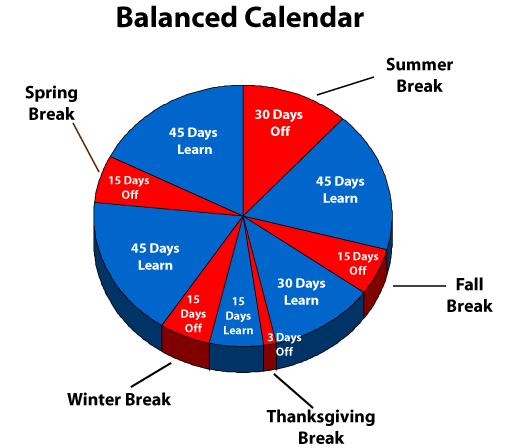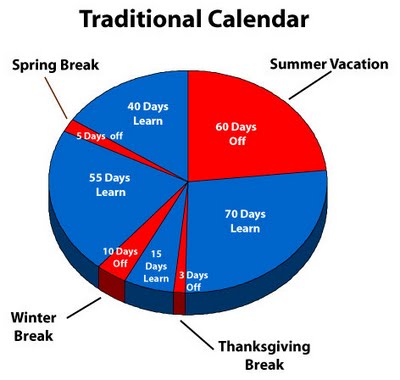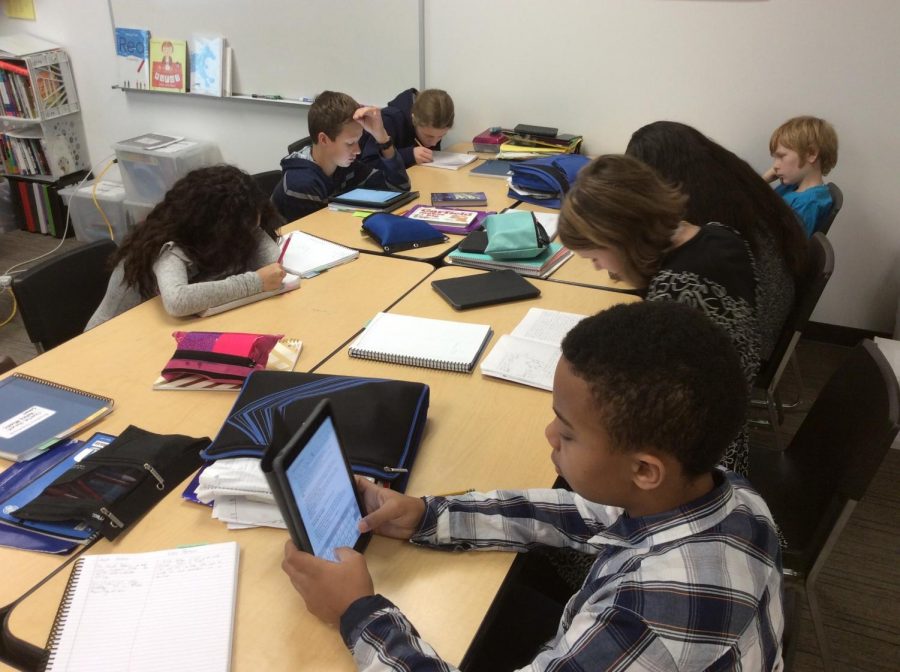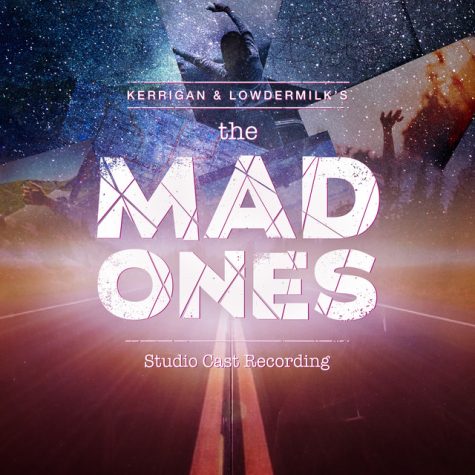Valley should consider a year-round calendar
When most think of school, they think of the typical 9-month school year. Many students have never even heard of or considered the year-round school model. Naturally, we are very attached to summer break, but I think that you should at least consider year-long school. It solves two major problems schools and students face annually.
Problem #1 with a 9-month calendar: Summer learning loss
Statistics show that on average students lose 2 months of reading skills over the summer and 2.6 months of math skills are lost over the summer as well. The equivalent of one month of overall learning is lost after summer vacation. Six weeks in the fall are spent relearning old material to make up for summer learning loss. It can take up to two months from the first day of school for a student’s brain development to get back on track. By the end of sixth grade, students who have experienced summer learning loss over the years are an average of two years behind their peers.
There are two ways to solve this problem. First, you can attempt to prevent information loss. The biggest problem about this solution is that it will not work for everyone. The thing is, if a student does not want to learn or work hard during the summer, they most likely won’t. There are other small obstacles in the way; for example, students most likely won’t push themselves at math homework when they could be playing outside. That’s where parents come in. They will push their sons and daughters to work on their homework before outside time.
Why doesn’t that solve the problem for everyone? It’s called the economy. Almost all parents work at least one job to support their family. So, while almost all jobs require you to work during the summer, that’s problematic for parents to push you to learn over the summer when they are at work. So that option is out, but there is a backup solution and it’s called year-round school. The solution is simple: no three-month summer break equals no summer learning loss.
How does year-round school work? First of all, I think I should clarify one thing. I once thought that year-round schooling meant that one day you’re a sixth grader and then the next you’re a seventh grader. That’s not how it works. You still have a summer break. It’s just one month rather than three, and the left over two months of the break are made up over the course of the year.
Problem #2 with a 9-month calendar: Over-enrollment
Why does over enrollment even happen? Well, first you have to consider the maximum class size; a good estimate for this number is 40 students (if it seems high, I am here to tell you that Valley Middle School has more than one class that includes 40 or more students). How is it possible for a teacher to have one-on-one time with every student in his or her class? It really isn’t; in a 50-minute period, without including lesson plans, a teacher can only possibly speak with each student individually for a little less than one and a half minutes. So, you really can’t have any more students, but it’s a public school, so it’s against what a public school stands for to turn away students.
How does year-round school solve this big issue facing public schools? First, you must know the difference between a multi-track school and a single-track school. Valley Middle School is a single-track school because everyone is on the exact same schedule. In all multi-track schools, different students have different schedules. For example, student A may have a 3-week break starting on November 9th but student B may have a 3-week break on January 3rd. Here is an example of a year-round calendar compared to a traditional calendar:


Multi-track schools
It’s time to explain multi-track school versus single track. Imagine that a school has 6 different tracks, each track with a sixth of the school’s students. Everyone in Group 1 has all the same breaks. Multi-track can be confusing, what I mean is what if you have a break and forget about it, though this is not very likely I could happen.
How does this affect teachers? First, we must think about other job fields compared to teaching. Every job field out there, including teaching, causes something called burn out. Burn out is when you feel stuck or bored in a job you once loved, it’s similar to writer’s block in some ways. The big problem with teacher burnout is that it greatly affects the students. If the teacher is not into the lesson, the students probably aren’t either, which can lead to failing students and great teacher’s getting fired or quitting. Luckily, teachers have a summer break that can help them fight off burnout and come back rejuvenated. All in all, year-round school doesn’t affect the teachers too much.
A year-round schooling model can immediately increase the school’s capacity by at least 33 percent at a school with at least four tracks. It also provides capital and operating savings. It increases student attendance rates, fewer teacher substitute days, as well as allowing the school to be open for twelve months rather than only nine. It can in many cases decrease class sizes to make smaller, more manageable classes.
Possible hurdles
One could argue that a year-round model negatively affects athletics and activities. It makes it nearly impossible to fit everyone on a sports team’s schedule. It also causes problems for the band and extracurricular activities. Also, students transferring between the two models might have some difficulties catching up. These are all problems that would need to be solved.
One could also argue that childcare could be challenging and perhaps more expensive. This could be seen as a problem, but also as an opportunity. Childcare is in more demand with a year-round school, creating more jobs.
Worth considering
I believe that the pros of year-round schooling outweigh the cons. Year-round schooling is the way to go, so Valley should consider switching over.
Sources: Timothy Walker, The Atlantic | Cathryn Vandewater, certificationmap.com














a person • Apr 24, 2018 at 9:41 am
I disagree in minnesota we need to enjoy our summer its not always warm we need to let students enjoy their and hang out with family and friends and also have fun
Brady C • Jan 18, 2018 at 8:28 pm
Came on, Admit it. We all like our 3 month break, Right? I think summer break is fine because we get a long time off with the end of a school year. As well as we have more time to visit family and enjoy the outdoors and not give a crap about school work ( unless you were one of those students who had to do it, because yeah…) but at the same time a year round school year is also fine with periodic 3 week breaks. But the other issue is that it will cost more money to run the school in the summer for ac and will overall cost more. I also think a 9-month school year works just perfectly fine for me and what would we even do for the extra 2 months given in a full year calendar if we already learn the things we need to just fine in a 9-month calendar?
Anonymous • Nov 28, 2017 at 8:24 am
This year long calendar is most commen in California and states where it is hot all year long because they don’t need a summer break because it’s always pretty hot all year. It makes sense to have a full summer break here because we only have a limited time of summer weather.
so true • Nov 30, 2017 at 11:05 am
lets enjoy the good weather shall we?
Mason Phoulavan • Nov 22, 2017 at 2:28 pm
I don’t agree with the year round schedule because everyone looks forward to summer break. And it also kind of draws a line between grades, instead of one month your a 7th grader and the next your a 8th grader.
Anonymous • Nov 21, 2017 at 11:34 am
I kinda and kinda don’t agree with that because being at school for a year can be stressing for kids but on the other side you get longer breaks for winter and spring breaks and more breaks than a regular school year for public schools.
Somone you don't know • Nov 20, 2017 at 8:37 am
Number one, most students would not agree with the change. Number two, Valley can not just switch over without going to the district office, 75% of Teachers/Students and parents wanting to switch and the district would not agree to that. Number three, That would change alot of things with teachers, Teachers have kids to that they need to take care of over the summer.
Anonymous • Nov 28, 2017 at 7:46 am
I do not agree